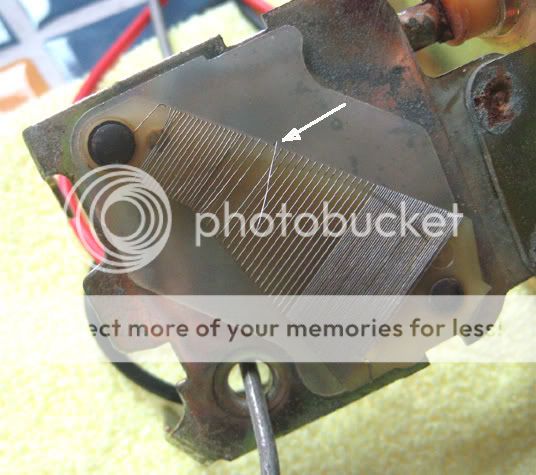newmexTR3
Jedi Trainee
Offline
Discovered last night night that the PO did some absolutely crazy things with the wiring. I was trying to sort out my fuel gauge, which is only accurate down to half a tank.
I discovered that there was a wire running from the Green wire post of the gauge to the power post of my heater rheostat (wtf?). So I remove it and now the gauge doesn't work at all. I had it tested by MOMA last year, so I believe that the gauge is functioning correctly. I tried wiring the gauge directly to the fuse box and fuel tank sender, but got either nothing or full tank showing. I did notice that when I turn the key off, the gauge briefly goes to level it should probably be at.
The wiring diagram is not clear on what wires are attached to the top of the fuel sender. On mine, I have the Green/Black wire from the gauge running to one post, and then another black grounding wiring going to the other post (from where I'm not sure yet). Can someone confirm the correct configuration for the sending unit posts?
Two other things:
On the wiring diagram, the hot post of the heater rheostat is says it attaches to A2 on the fuse box. Is this correct?
On the wiring diagram in the top left corner it shows a "ground for dash panel" - where is this exactly?
I'm using page two of this wiring diagram, which is so much better than the Haynes.
Thanks guys
I discovered that there was a wire running from the Green wire post of the gauge to the power post of my heater rheostat (wtf?). So I remove it and now the gauge doesn't work at all. I had it tested by MOMA last year, so I believe that the gauge is functioning correctly. I tried wiring the gauge directly to the fuse box and fuel tank sender, but got either nothing or full tank showing. I did notice that when I turn the key off, the gauge briefly goes to level it should probably be at.
The wiring diagram is not clear on what wires are attached to the top of the fuel sender. On mine, I have the Green/Black wire from the gauge running to one post, and then another black grounding wiring going to the other post (from where I'm not sure yet). Can someone confirm the correct configuration for the sending unit posts?
Two other things:
On the wiring diagram, the hot post of the heater rheostat is says it attaches to A2 on the fuse box. Is this correct?
On the wiring diagram in the top left corner it shows a "ground for dash panel" - where is this exactly?
I'm using page two of this wiring diagram, which is so much better than the Haynes.
Thanks guys

 Hi Guest!
Hi Guest!

 smilie in place of the real @
smilie in place of the real @
 Pretty Please - add it to our Events forum(s) and add to the calendar! >>
Pretty Please - add it to our Events forum(s) and add to the calendar! >> 
